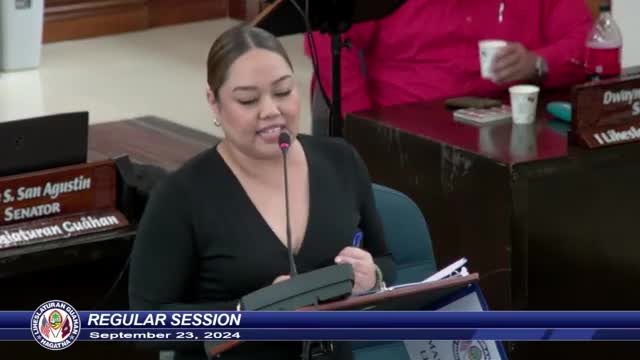Lawmakers clash over healthcare facility funding and future
September 23, 2024 | General Government Operations and Appropriations , Legislative, Guam
This article was created by AI summarizing key points discussed. AI makes mistakes, so for full details and context, please refer to the video of the full meeting. Please report any errors so we can fix them. Report an error »

During a recent legislative session, Guam lawmakers engaged in a heated discussion regarding two competing bills aimed at addressing the island's pressing healthcare needs. The focus was on the utilization of a vacant building for healthcare education and services, with the Guam Community College (GCC) proposing to co-locate with the Department of Public Health and Social Services (DPHSS).
Senators expressed frustration over the prolonged vacancy of the building, which has remained unused for over five years. One senator highlighted the urgent need for a new hospital and the ongoing struggle for constituents to access adequate healthcare, often relying on off-island services. The senator emphasized the importance of GCC's willingness to secure federal funding to enhance local healthcare education and workforce development.
The discussion centered around two bills: Bill 221, which would transfer the property directly to GCC, and Bill 222, which aims to allow DPHSS to utilize the building. Lawmakers debated the merits of both bills, with some advocating for a merger to create a comprehensive solution that would benefit both agencies and the community. They argued that collaboration could address the island's critical shortage of healthcare professionals and facilities.
Concerns were raised about the feasibility of Bill 222, as DPHSS currently lacks the capital funding necessary for renovations or repairs. Lawmakers pointed out that without financial resources, the bill's promise of immediate use for public health services may not be realistic. The head of the Public Health Employees Association confirmed that no federal grants are available for capital expenditures, further complicating the situation.
As the session progressed, calls for a public hearing on both bills were made, with some senators urging their colleagues to consider the potential benefits of merging the two proposals. The overarching sentiment was a desire to find a solution that would effectively address the healthcare challenges facing Guam, ensuring that both education and services could be provided in a collaborative manner. The outcome of this legislative discussion remains to be seen, as lawmakers continue to navigate the complexities of healthcare provision on the island.
Senators expressed frustration over the prolonged vacancy of the building, which has remained unused for over five years. One senator highlighted the urgent need for a new hospital and the ongoing struggle for constituents to access adequate healthcare, often relying on off-island services. The senator emphasized the importance of GCC's willingness to secure federal funding to enhance local healthcare education and workforce development.
The discussion centered around two bills: Bill 221, which would transfer the property directly to GCC, and Bill 222, which aims to allow DPHSS to utilize the building. Lawmakers debated the merits of both bills, with some advocating for a merger to create a comprehensive solution that would benefit both agencies and the community. They argued that collaboration could address the island's critical shortage of healthcare professionals and facilities.
Concerns were raised about the feasibility of Bill 222, as DPHSS currently lacks the capital funding necessary for renovations or repairs. Lawmakers pointed out that without financial resources, the bill's promise of immediate use for public health services may not be realistic. The head of the Public Health Employees Association confirmed that no federal grants are available for capital expenditures, further complicating the situation.
As the session progressed, calls for a public hearing on both bills were made, with some senators urging their colleagues to consider the potential benefits of merging the two proposals. The overarching sentiment was a desire to find a solution that would effectively address the healthcare challenges facing Guam, ensuring that both education and services could be provided in a collaborative manner. The outcome of this legislative discussion remains to be seen, as lawmakers continue to navigate the complexities of healthcare provision on the island.
View full meeting
This article is based on a recent meeting—watch the full video and explore the complete transcript for deeper insights into the discussion.
View full meeting